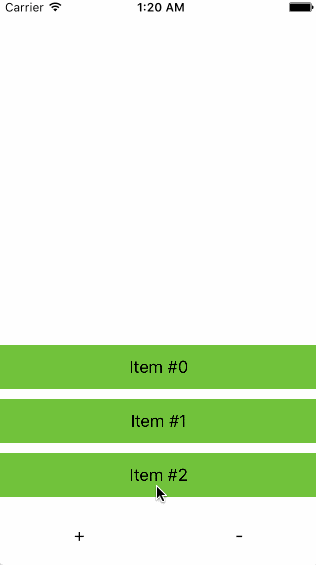在一个UITableView中,通常会有1到3个UITableViewCell。是否有一种方法,在reloadData后总是将单元格位置固定在屏幕底部?
+----------------+ +----------------+ +----------------+
| | | | | |
| | | | | |
| | | | | |
| | | | | +------------+ |
| | | | | | cell 1 | |
| | | | | +------------+ |
| | | +------------+ | | +------------+ |
| | | | cell 1 | | | | cell 2 | |
| | | +------------+ | | +------------+ |
| +------------+ | | +------------+ | | +------------+ |
| | cell 1 | | | | cell 2 | | | | cell 3 | |
| +------------+ | | +------------+ | | +------------+ |
+----------------+ +----------------+ +----------------+
